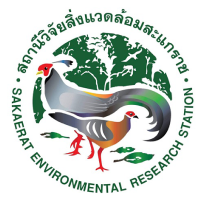Keywords :
Testudine; Autocorrelated; Kernel Density Estimator; Patial Ecology; Space Use; Thailand; Indotestudo elongate
บทคัดย่อ :
Home range analysis is a standard and fundamental concept in ecology used to describe animal space use over their lifetimes. Connecting home range sizes with animal characteristics, location, and habitat can be used to inform conservation decisions. Reptiles are frequently lacking robust estimates of space use, particularly reptiles in tropical regions. Here we analyse a publicly available dataset, collected by the authors of this study, describing the movements of Critically Endangered Elongated tortoises Indotestudo elongata. The tortoise data included the locations of 17 tortoises (12 females, 5 males) collected on average once every three days for an average duration of 353.76 SE (+-) 33.10 days. We use these data to estimate the home range of Elongated tortoise, and explore how tortoise size and sex influences home range size. To mitigate issues resulting from low effective sample sizes and low temporal resolution of the data, we used a modern home range estimation method - Autocorrelated Kernel Density Estimators (AKDE). We found 14 of 17 individuals appear to be occupying a stable home range (using variograms to determine range residency). The average AKDE home range for all 14 individuals with range residency was 44.81 (+-) 10.44 ha. Bayesian Regression Models suggest comparable size estimates between male and female home ranges, despite males being physically larger than females in both mass and carapace length. These AKDE home range estimates have the added utility of being more comparable with other studies, less susceptible to errors from a suboptimal tracking regime, and are well positioned for inclusion in future meta-analyses.
เอกสารอ้างอิง :
Montano, Y., Marshall, B. M., Ward, M., Silva, I., Artchawakom, T., Waengsothorn, S., & Strine, C. (2021). A stable home: Autocorrelated Kernel Density Estimated home ranges of the critically endangered Elongated Tortoise. Herpetological Journal. Volume 32 (July 2022), 120-129



